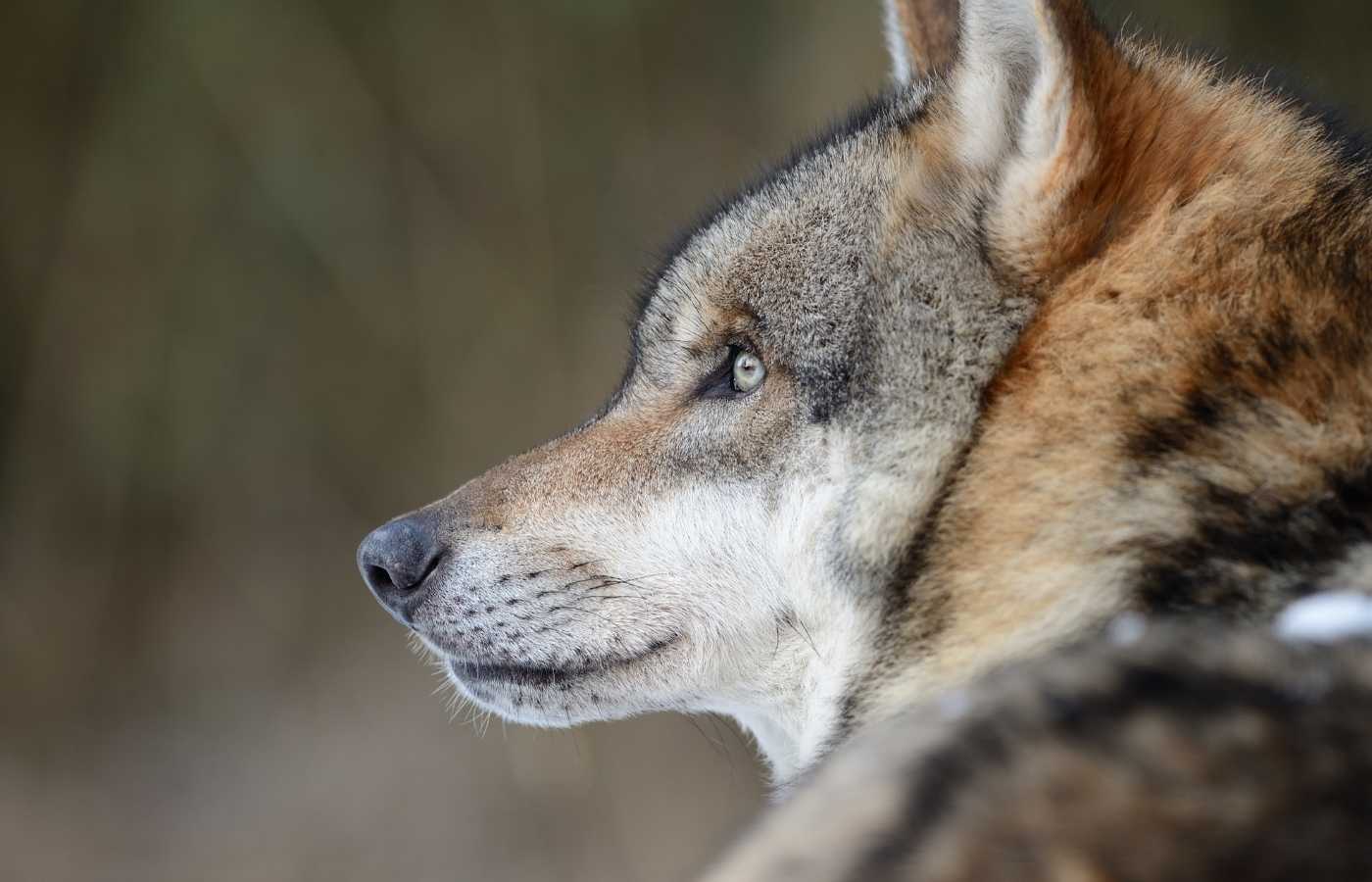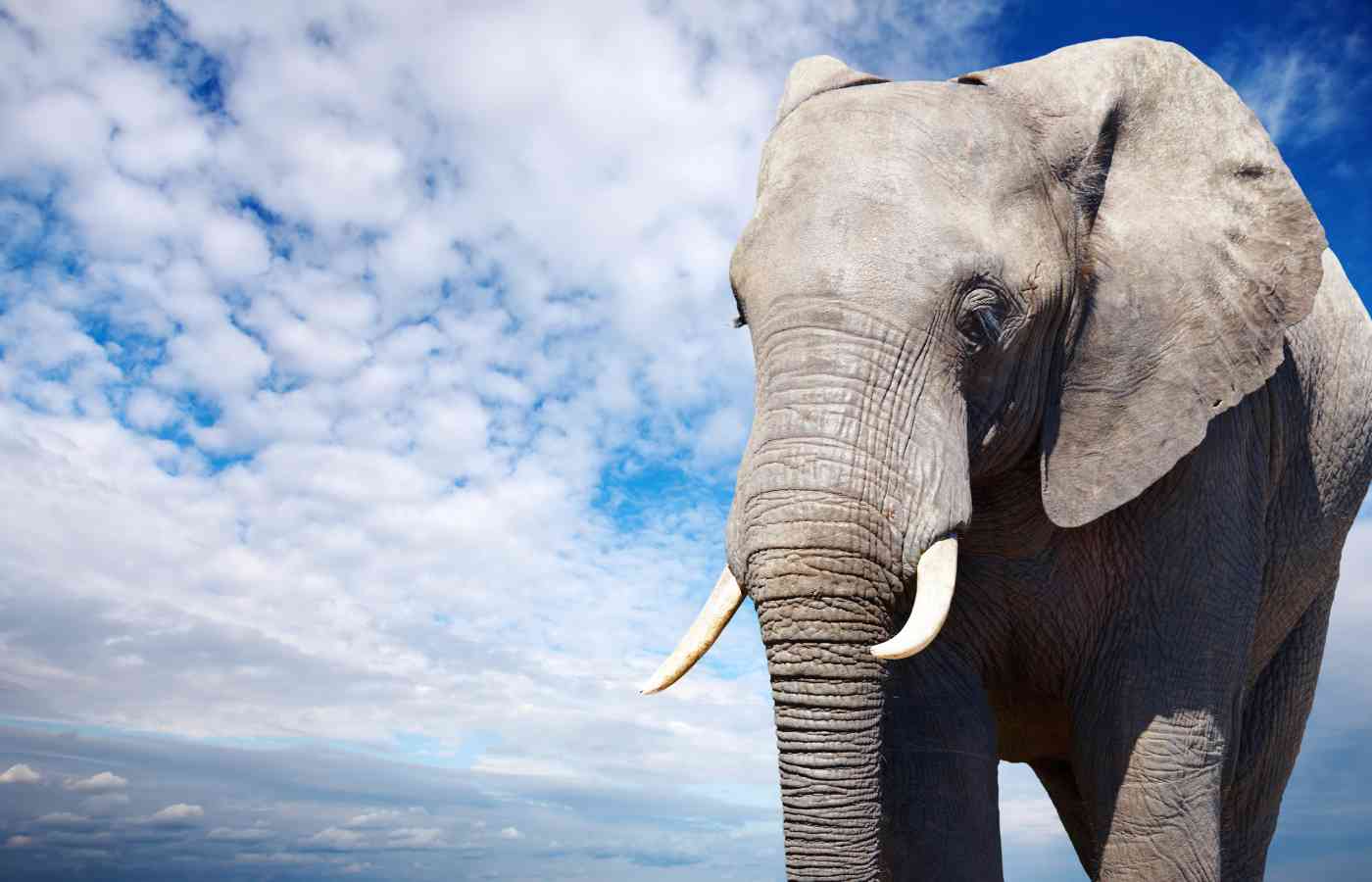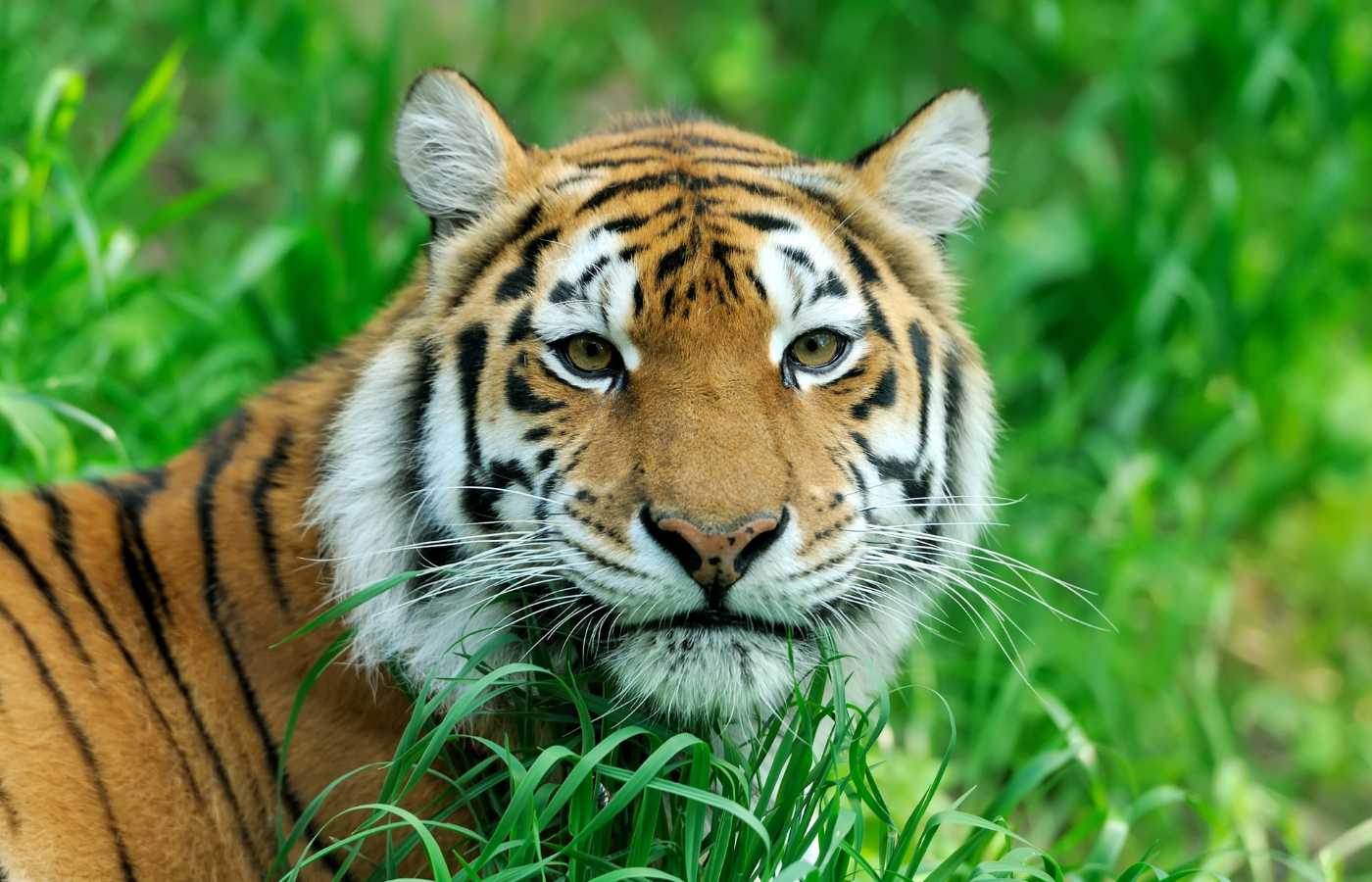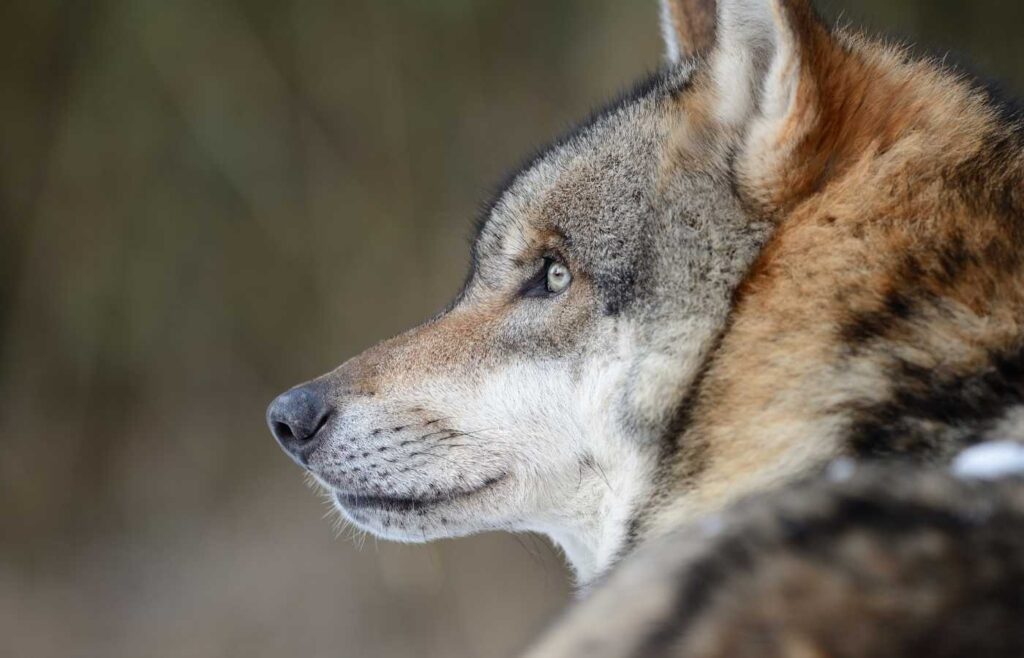
August 13th is International Wolf Day, and there’s no better time to celebrate these amazing animals.
Although they often play the role of a villain or “the big bad wolf” in fairy tales and movies, wolves generally are not harmful to humans, and prefer not to interact with us.
Today is a great day to learn more about wolves and bring attention to their situation.
65 Fun Facts About Grey Wolves
1. The Grey Wolf is the most common type of wolf. It is also the largest wolf.
2. Weight: Grey wolves can weigh up to 110 lbs. It is the heaviest wolf.
3. Males typically weigh between 80-110 lbs., and a female’s body weight is typically weight between 60-80 lbs. They are large animals!
4. Height: They are typically about 26-32 inches tall.
5. Length: Grey wolves can measure up to 6.5 feet from their nose to the tip of their tail.
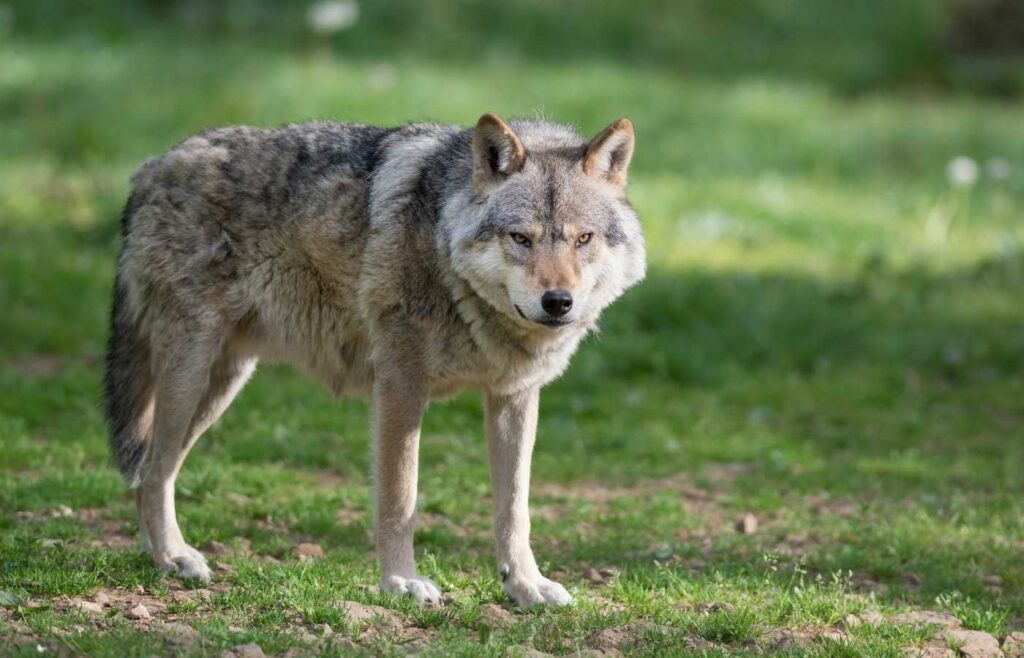
6. Males are typically between 5-6.5 feet long, while females usually measure between 4.5-6 feet.
7. Their paws can measure 5 inches in length. They have large feet!
8. Speed: Wolves can reach speeds of 40 mph during a chase
9. Wolves can hear sounds as far as 5 miles away.
10. A wolf’s sense of smell is at least 100 times better than humans.
11. They have 200 million nasal olfactory cells.
12. Fur: The coat color on Grey Wolves can be any shade of grey, brown, black, white, or tan.
13. Their fur becomes darker in the winter!
14. Almost all Grey Wolves have thick fur and bushy tails which helps them live in very cold climates.
15. There are five subspecies of gray wolves in North America.
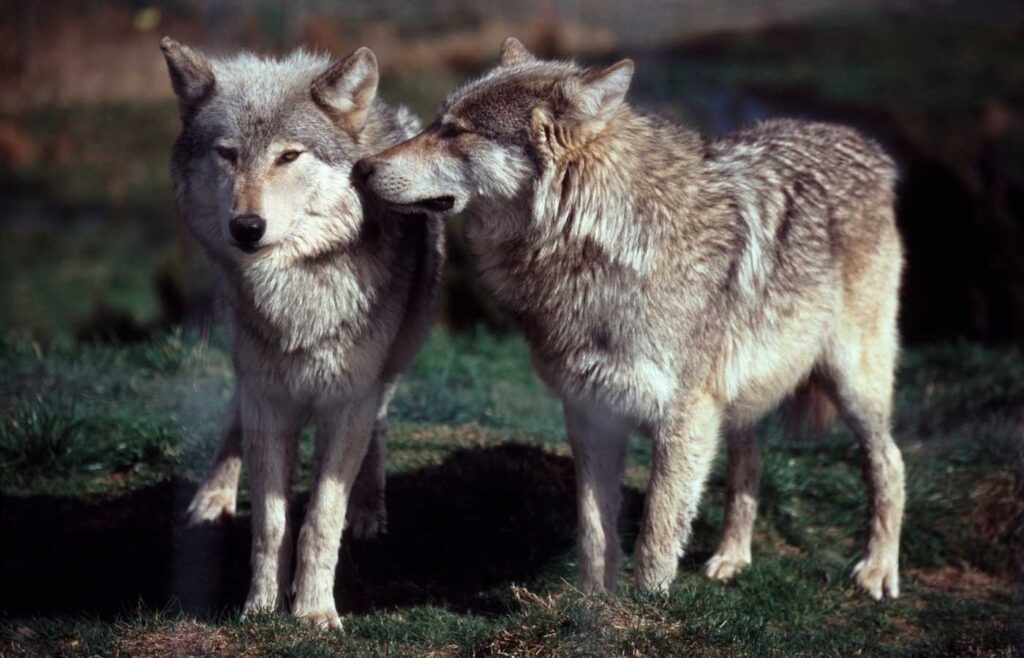
16. Lifespan: Gray wolves have been known to live a maximum of thirteen years in the wild, though the average lifespan is about 5 to 9 years.
17. They can live 14-15 years in captivity.
18. Gray wolves are members of the canine family, which also includes dogs, foxes, jackals, and coyotes.
19. Grey Wolves are the largest wild members of the dog family.
20. Wolves are the predecessors to our domestic dogs.
21. Wolves and dogs are closely related, and the ways they communicate are similar.
22. Adult wolves look like large dogs. However, their jaw is longer and stronger, and their head is bigger.
23. Name: The scientific name for the grey wolf is canis lupus.
24. They are also known as timber wolf, tundra wolf, lobo, and prairie wolf.
25. Habitat: Grey wolves can live in a wide variety of habitats, from arctic tundra to forest, prairie, and arid landscapes.

26. In the United States, they live in Alaska, Idaho, Michigan, Minnestora, Montana, Wisconsin, and Wyoming (and a few parts of Canada!).
27. Prey: Grey wolves are carnivorous, eating mostly meat. Their sharp teeth help with eating their prey.
28. They hunt for large prey like deer, moose, sheep, goats, caribou, elk, bison, and muskox.
29. They also prey on small animals like rodents, beavers, fish, and birds.
30. Wolves will also eat other foods that are readily available, such as apples, pears, berries, and melons.
31. Wolves are mostly nocturnal, hunting after dusk and returning to rest at sunrise.
32. While a bear or a mountain lion might be able to attack a single wolf all by itself, they are no match for a pack of wolves that travel together.
33. Grey wolves play a key role in stabilizing ecosystems.
34. On average, gray wolves will eat 20 to 30 pounds of meat in one meal.
35. They have also been known to go up to 14 days between meals with no problem.
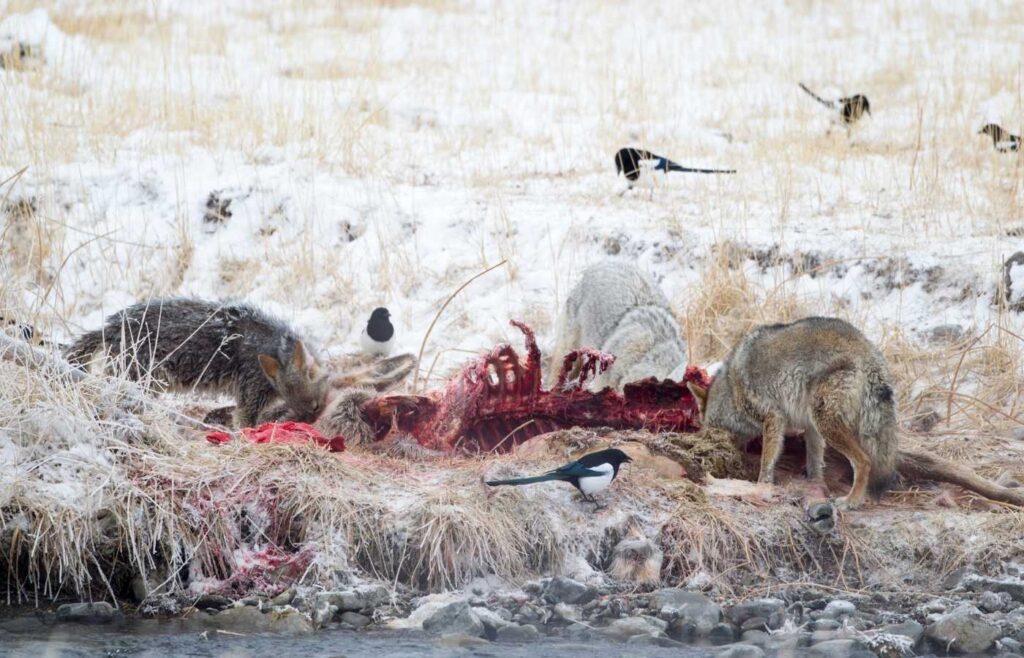
36. Wolves typically hunt within territories, ranging from 50 to 1,000 square miles.
37. They can travel long distances, covering up to 12 miles (20 km) in a single day.
38. Grey wolves are very social animals.
39. They live and hunt in wolf packs of 6-8 wolves, with a mom, dad, and offspring.
40. The leaders of the pack are an alpha male and an alpha female (mom and dad).
41. Once the female chooses a partner, the pack leaders may remain paired for a number of years.
42. An alpha pair often mates for life.
43. Breeding season is between late January and March.
44. A new wolf couple will produce one litter of pups every year. The gestation period is about 9 weeks.
45. Litter size ranges from 4-6 pups.
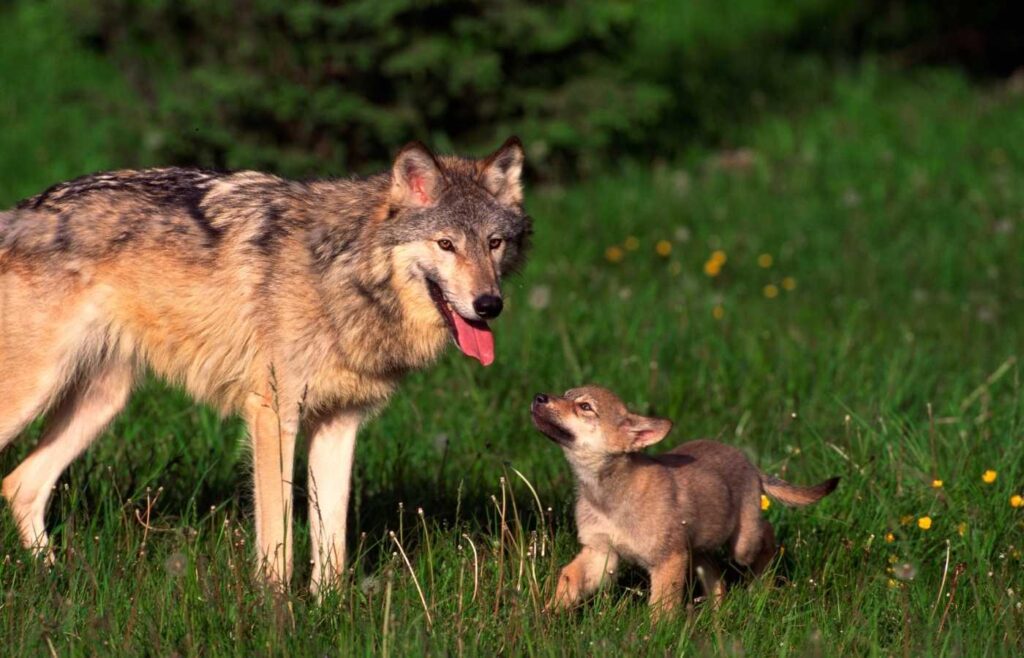
46. Wolf pups are born blind and deaf, and must be cared for until they mature at around ten months of age.
47. A female wolf feeds her babies with milk, like all mammals.
48. Wolf pups are usually born with blue eyes, however they change to yellow-gold when the pups are 10-16 weeks old.
49. Half of the wolf pups don’t reach adulthood due to predation and diseases.
50. Young wolves stay in their parents’ pack for at least two years.
51. Some of them take off to join other packs or to start their own. They may stay close to their parents or go far away.
52. Wolf pups play a lot by leaping, chasing, wrestling, playing hide-and-seek, and tag.
53. The older wolf siblings care for their younger brothers and sisters by finding them food.
54. The wolves’ communication skills are very important to the pack’s survival.
55. Pack members often communicate with each other through howling.
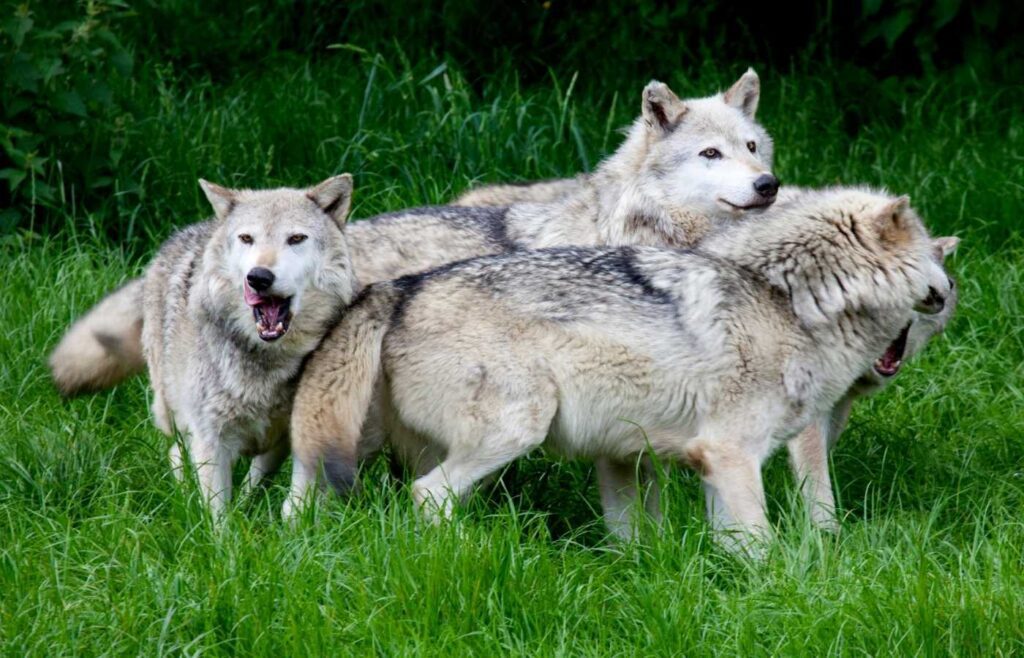
56. The howl is used as a way to call to another pack or warn of danger.
57. The Grey Wolf’s howl can be heard from ten miles away.
58. Each pack has a unique howl.
59. Wolves howl more when the moon is full and bright.
60. They also whimper and whine, growl and bark, yelp and snarl.
61. Wolves communicate with each other using urine. They mark their territory to tell other wolves in their pack where they area.
62. Members of the pack also communicate through body language.
63. You can tell a wolf feels confident if it holds its head up high and has its ears perked up.
64. If it’s feeling submissive, it will lower its body, flatten its ears, and put its tail between its legs.
65. When a wolf wants to play, it prances and lowers the front of its body with it’s behind in the air and its tail wagging.
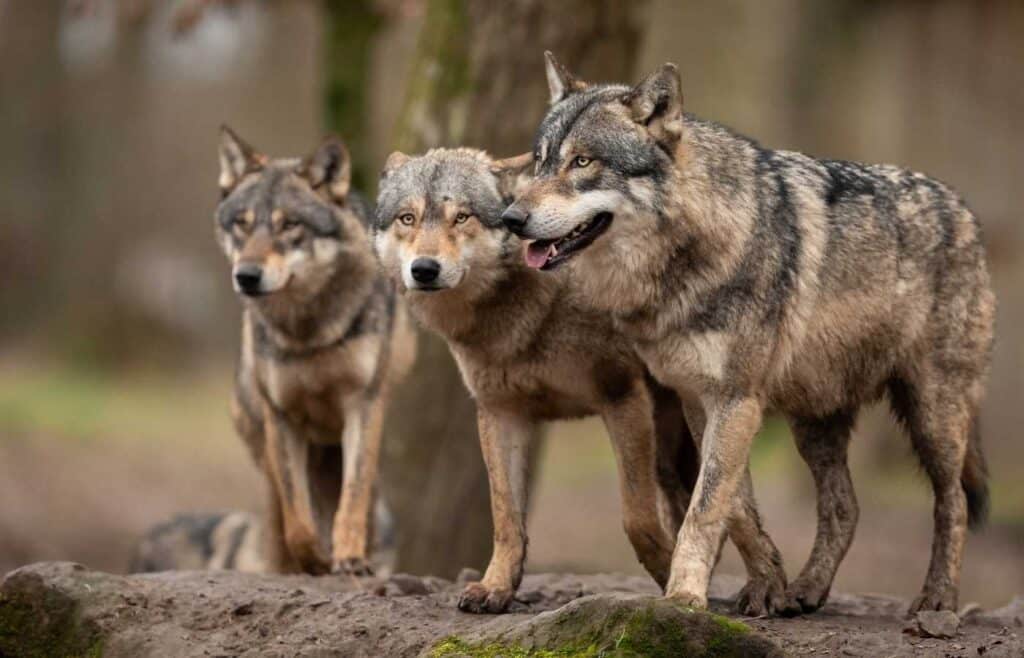
66. When it’s angry, a wolf growls and shows its fangs.
67. In the past, hunting and habitat destruction have caused a steep decline in populations.
68. Thankfully in most places, the Grey Wolf population is stable and thriving. They are not endangered currently.
We hope you loved these interesting facts about Grey Wolves!
There’s plenty more to learn! Other types of wolves include the Red Wolf, Arctic Wolves, the Ethiopian Wolf, the Mexican Wolf, and the White wolf.
Frequently Asked Questions About Grey Wolves
Are grey wolves endangered?
No. Thankfully in most places, the Grey Wolf population is stable and thriving. They are not endangered currently.
What do grey wolves eat?
Grey wolves are carnivorous, eating mostly meat. Their sharp teeth help with eating their prey. They hunt for large prey like deer, moose, sheep, goats, caribou, elk, bison, and muskox. They also prey on small animals like rodents, beavers, fish, and birds. Wolves will also eat other foods that are readily available, such as apples, pears, berries, and melons.
Are grey wolves dangerous?
Wolves in the wild usually do not pose a threat to humans. They are very cautious animals and they tend to avoid contact with humans.
Do grey wolves eat coyotes?
Yes, grey wolves will eat coyotes.
Where do grey wolves live?
Grey wolves can live in a wide variety of habitats, from arctic tundra to forest, prairie, and arid landscapes. In the United States, they live in Alaska, Idaho, Michigan, Minnestora, Montana, Wisconsin, and Wyoming (and a few parts of Canada!).
How you can help Grey Wolves
Wolf Haven International is a nationally recognized sanctuary for captive born and displaced wolves. Their mission is to conserve and protect wolves.
Grey Wolf Books
Here are some of the books we recommend reading to find out more about Grey Wolves:
Related Articles:
Emperor Penguin Facts for Kids
100 Mind-Blowing Facts About Elephants
Calie Herbst, Editor-in-Chief of Milwaukee With Kids, has spent over a decade combining her experiences as a parent of three to create a hub for Milwaukee’s family adventures.
Her decade-long teaching career in Milwaukee Public Schools and academic background, including a Master’s in Teaching from Marquette University and dual B.A.s in Sociology and Spanish from the University of Wisconsin – Madison, fuel her passion for inclusive and engaging family content.
Calie is also a recognized voice in local media, contributing to WISN Channel 12 News, WTMJ Wisconsin Morning News, Fox 6’s Real Milwaukee, and B93.3.
Discover more about Calie’s journey and editorial approach on her About Page and Editorial Policy Page.


